- Administrator
- Albums and Singles
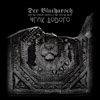 Der Blutharsch's sudden transition from militaristic industrial project to perverse psychedelic rock band was jarring and abrupt, and always a bit baffling. The albums since Time is Thee Enemy! have moved more and more into that direction, but often laden with a sense of identity confusion: the pieces never seemed to come together quite right for me. In this collaboration with Aluk Todolo, however, both embrace their hallucinogenic tendencies in unison, resulting in a brilliantly cohesive album that is equal parts krautrock, psychedelia, and dark experimentalism.
Der Blutharsch's sudden transition from militaristic industrial project to perverse psychedelic rock band was jarring and abrupt, and always a bit baffling. The albums since Time is Thee Enemy! have moved more and more into that direction, but often laden with a sense of identity confusion: the pieces never seemed to come together quite right for me. In this collaboration with Aluk Todolo, however, both embrace their hallucinogenic tendencies in unison, resulting in a brilliantly cohesive album that is equal parts krautrock, psychedelia, and dark experimentalism.
This collaboration emphasizes the best elements of both artists, with Albin Julius and friends' use of stereotypically psych rock sounds, such as organ and distorted guitar, but as an extra piece to the dark textural soup that characterizes Aluk Todolo's sound.It makes sense for the two to collaborate, since both artists have been moving in similar directions sonically.
Across the four untitled tracks, each around ten minutes, the rock guitars, organs, and big live drums are balanced out by vintage analog sounds and unidentifiable passages. The opener starts with a classic old school drum machine loop and distorted bass before the "rock" comes in, leading it down a path that mixes the organic with the alien.It definitely leans into unabashed rock territory, but there is always an undercurrent of subtlety to be heard.
The closing piece is cut from a similar cloth, opening with stiff beats and electronic loops before the guitar/bass/drums get piled on.In comparison to the first track, there’s a greater sense of rhythmic variation, with a constant evolution in sound from beginning to end; it just never sits still.
Sandwiched in the middle are two tracks that owe more to the early 1970s krautrock scene instead of the LSD and 'shroom drenched psychedelia that dominates most of Der Blutharsch's recent output.The second song opens with echoed drums, organ and bass that's quite reminiscent of Tago Mago era Can, including the inclusion of vocals that are subtle and work well as an instrument rather than the overall focus, a la Damo Suzuki's contributions.
The subsequent song's breakbeat opening lends a decidedly Germanic sense of funk as a backbone, rapid and taut with a stainless steel precision.While it is probably the most repetitive of all here from a structural perspective, the lack of rhythmic variation is the perfect underpinning with the addition of electronic elements and organ improvisations.
While I have had mixed opinions on Der Blutharsch's more recent direction, where some of the tracks have been brilliant while others fell flat for me, here the entire album is a winner.I don't know if it's simply Julius and crew settling in to their new voice, or the helping hand of Aluk Todolo, but the result is a great combination of psych rock and dark ambiences that sound like no one else, in the best possible way.
samples:
 
Read More
- Duncan Edwards
- Albums and Singles
 Long-time musical partners Anna Domino and Michael Delory take ten songs from the public domain and recreate them in their own image: the cool detachment of Domino's voice and non-traditional arrangements contrasting with narratives of treachery and murder. As they previously did in 1999 with their much-heralded album Songs from My Funeral.
Long-time musical partners Anna Domino and Michael Delory take ten songs from the public domain and recreate them in their own image: the cool detachment of Domino's voice and non-traditional arrangements contrasting with narratives of treachery and murder. As they previously did in 1999 with their much-heralded album Songs from My Funeral.
 
The mid-1980s saw the significant, but still under-appreciated, Les Disques du Crepuscule label sprouting out of Brussels. The city was a magnet for artists such as Cabaret Voltaire, Tuxedomoon, Michael Nyman, Wim Mertens, Billy MacKenzie, The Durutti Column, and Paul Haig*. This Belgian landscape also included Anna Domino whose 1984 mini-album East and West contained "Land of My Dreams," a distinctive version of an Aretha Franklin song and a good starting point for describing Snakefarm. The melancholy intensity in "Land of My Dreams" comes from the dreamy, repetitive, musical backdrop in combination with Domino’s hypnotic, non-emotive, singing. Somehow these two (apparently effortless) aspects combined to create a sad remnant of passion and yearning. I believe the marvelous Virginia Astley may have contributed piano and backing vocals to the record, too.
As Les Disques du Crepuscule slowly faded away, Delory and Domino relocated to Arizona and eventually re-emerged as Snakefarm. I haven’t heard the 1999 recording but its success means that My Halo at Half-Light will be both much anticipated and also cast in a shadow of expectation. This album is more textured than the Anna Domino of the Brussels period and solo releases, yet a pervading aura of nothingness remains intact. In a sense, these new versions of old folk songs have a strong sensibility of North America, reflecting the other-worldly landscapes out in the mythical West, the feeling of vastness and absence, and the hollow familiarity of the same retail outposts studding the lonely highways. The music doesn’t all work for me, as I find the rhythms of "Darlin’ Corey," for instance, irritating (almost a pastiche of the word "tasteful") and prefer the hypnotic repetitive aspects to those where the pace is varied and the singing rather more "normal."
In those sections, as with "Land of My Dreams," the seemingly dispassionate playing and singing allows the songs to breathe and for feelings about the bloody, deceitful, tragic narratives to remain open to interpretation. The clarity of production ensures every word is audible and that some odd realizations and connections can emerge; not least that Staggerlee may be viewed as less a heroic legend and more a complete bastard capable of shooting another person despite them pleading not to widow their wife and render their children fatherless. The worthless John Lewis is also laid bare in "Omie Wise," drowning his pregnant girlfriend while her defences, and possibly her knickers, are down. "The Lady O" manages to sound airy and splendedly terse but also like an imaginary discarded sketch for early OMD and Roger McGuinn’s 12-string to collaborate on the theme tune for spoof television cooking show Posh Nosh.
A cynic might remark that the only thing America loves more than vastness and violence is the thought of assured redemption. If so, the album closer "Michael" (as in "Michael rowed the boat ashore. Alleluia") is an apt ending. At first sounding like a hilarious nod to the oft-quoted debt owed to Anna Domino by Portishead, this sparse piece is a strange, slight, yet satisfying version of an old gospel song (long ago rendered virtually unbearable and meaningless by the kumbaya crowd).
Several Les Disques du Crepuscule recordings have been reissued by LTM.
* As noted by Anat Pack for the Iowa Journal of Cultural Studies.
Read More
- Administrator
- Albums and Singles
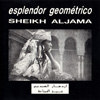 While they have never been especially prolific, Esplendor Geométrico's discography is still a surprisingly daunting and disorienting thing to navigate, due to their many compilations, reissues, disappearing record labels, and stylistic shifts.  Sheikh Aljama, now reissued for the first time since 1994, was originally recorded between 1987 and 1988 and was one of the final albums of the band's crunchy and noisy early era.  It is also unique for incorporating Arabic influences.  I'd be remiss if I didn't say that that particular assimilation was not especially skillful or seamless (especially when compared to Muslimgauze), but the album's hypnotically bludgeoning beats make such flaws seem totally irrelevant.  This is one of Esplendor Geométrico's finest efforts.
While they have never been especially prolific, Esplendor Geométrico's discography is still a surprisingly daunting and disorienting thing to navigate, due to their many compilations, reissues, disappearing record labels, and stylistic shifts.  Sheikh Aljama, now reissued for the first time since 1994, was originally recorded between 1987 and 1988 and was one of the final albums of the band's crunchy and noisy early era.  It is also unique for incorporating Arabic influences.  I'd be remiss if I didn't say that that particular assimilation was not especially skillful or seamless (especially when compared to Muslimgauze), but the album's hypnotically bludgeoning beats make such flaws seem totally irrelevant.  This is one of Esplendor Geométrico's finest efforts.
Daft/Apocalyptic Vision/Geometrik
Embracing Arabic sounds and images seems like a very odd choice for a Spanish post-industrial band named after a Futurist text, but it is not quite as wildly anachronistic as it initially seems.  The title and the dedication to Abu al-Hazm ben Jahwar both refer to the Republic of Córdoba, which was located in modern day Spain.  More specifically, they relate to a tumultuous transitional period where the chaos and civil war following the fall of the Caliphate was finally ended by the institution of an Arab Muslim dynasty.  All that historical turmoil is curiously analogous to this album's place in Esplendor Geométrico's discography, though I am sure it was not intentional: Sheikh Aljama was the bridge between the band's noisy and uglier early years and the cleaner, more complexly rhythmic entity they ultimately became.  There was even a corresponding personnel change, as founding member Gabriel Riaza left and Most Significant Beat's Saverio Evangelista joined the fold.
Regardless of where they draw their inspiration, sole mainstay Arturo Lanz and his varying cohorts have always been very single-minded in their focus: huge, visceral, and relentlessly repeating rhythms.  Everything else is beside the point: the only real variable is whether the beats will be fluid or crunching.  Sheikh Aljama is no exception to that template and the emphasis is quite firmly on distortion and crunch.  The accompaniment, for the most part, is limited to low-end throbbing and burbling and periodic intrusions of static and sizzle.  Occasionally some appropriated Arabic sounds are allowed to take the foreground, like the chanting in "Baraca," but usually it just sounds like some random TV or radio broadcast is allowed to drift in and out of the dense rhythmic onslaught.  Despite their seeming randomness, however, such snippets prove to be surprisingly effective at providing atmosphere, mystery, and contrast to the pummeling percussive attack.  There are probably a number of other things that could have filled that role equally well, but in this case it happens to be disjointed Arabic broadcast snippets and it works just fine.
Isolating the difference between a successful song and weak song on Sheikh Aljama (amusingly misspelled "Shelikh" on my reissue) is nearly impossible: they either suck me into their obsessively repeating pulse or they don't.  Usually, it is the denser, more layered pieces that absorb me, like "Medinati," but the cleaner, more minimal "Anima Triz" and its weirdly throbbing sub-bass are also quite mesmerizing, so any solid generalizations are impossible.  There are definitely many more hits than misses here though–I was listening to this album while driving on a highway at night a few weeks ago and had the abrupt realization that I had absolutely no idea where I was anymore because I had been too entranced by its immense, endlessly repeating rhythms to notice signs or even the passing of time.  I can't think of many other albums that have had such an effect on me.
Samples:
 
Read More
- Administrator
- Albums and Singles
 Roughly ten years ago, BBC's Radio 4 sent Chris Watson to Mexico to record one of the final continuous cross-country trips for Mexico's passenger rail system.  The resultant album is a narrative collage that uses those recordings to aurally recreate that unique and memorable journey.  I'd definitely say he succeeded quite impressively at that specific technical objective, but that doesn't necessarily translate into a great album.
Roughly ten years ago, BBC's Radio 4 sent Chris Watson to Mexico to record one of the final continuous cross-country trips for Mexico's passenger rail system.  The resultant album is a narrative collage that uses those recordings to aurally recreate that unique and memorable journey.  I'd definitely say he succeeded quite impressively at that specific technical objective, but that doesn't necessarily translate into a great album.
El Tren Fantasma ("The Ghost Train") borrows its title from a 1927 Mexican silent film, but it explicitly draws its primary inspiration from Pierre Schaeffer, whose train-based 1948 piece "Étude aux Chemins de Fer" was one of the first ever musique concrète compositions (unknowingly predated by only Halim El-Dabh's "The Expression of Zaar").  A dedication to Schaeffer makes perfect sense here, as El Tren Fantasma is essentially an extension of what Pierre did in 1948, but with the benefit of modern recording and editing equipment.  Sixty years of technological advances make an enormous difference though: Schaeffer was able to create a 3-minute rhythmic collage of train sounds, but Watson has condensed the sounds of an entire month-long journey into a single evocative and vibrant hour that doesn't miss a single detail.
Obviously, the focus is very much on railroad sounds, but Watson also captures the ambiance of the various lonely stops along the way (right down to the insects and the breeze).  Those touches are often among the album's highlights, as Chris has a long history of expertly capturing the subtle sounds of the natural world.  That said, Watson's most impressive recording and editing feats are reserved for the train itself, especially the way the rumbling and clacking changes as the train goes over a bridge or plunges into a tunnel.  Even when the nothing unusual is happening, however, the normal rumble and squeal of the train can be a striking and almost physical experience–especially with headphones.
Unfortunately, one of the album's greatest assets is also perversely its greatest handicap: its vibrancy and immediacy.  Watson has always created enveloping and amazingly life-like soundworlds, but none of his albums have been as bluntly attention-grabbing as this one: they just pleasantly and exotically changed my aural surroundings.  El Tren Fantasma, on the other hand, demanded my complete focus, but once it had me, it never went as far or as deep as I wanted it to go.
That unexpected problem unexpectedly surfaced for me due to "El Divisidero," a piece in which Chris unexpectedly moves from pure vérité into music by building a rhythm from heavily-processed clacking and weaving together something that sounds like a warm bed of droning synth.  It isn't spectacular or anything, but it made me wonder why Watson was willing to take those liberties, but didn't go further and turn the trip into something increasingly strange and phantasmagoric.  That would certainly make the album's title seem more apt (though I understand that sounds disconnected from their source could also be perceived as "ghosts").
Once I had that realization, it became very difficult to be content with an uneventful trip from station to station, no matter how perfectly rendered it was.  Also, there is no denying the fact that a long train ride through Mexico cannot be movingly recreated without some sort of visual component.  No one takes a train through Copper Canyon because they are eager to hear how it will sound.
While it is certainly relevant and necessary, it nevertheless feels a bit unfair to critique El Tren Fantasmo for the limitations of sound or for what I think it could've been.  Chris Watson set out to do two very specific things: document the last days of one of the world's most singular train rides and pay homage to one of electronic music's greatest visionaries.  He succeeded in both objectives beautifully.  El Tren Fantasmo may not be a triumph of composition, but it is an unqualified masterpiece in the realms of both recording and sound editing.  It is difficult to imagine a sharper and more instantly gratifying collage of field recordings than this one.
Samples:
 
 
Read More
- Administrator
- Albums and Singles
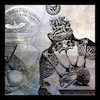 Matt Waldron has obviously had little to do lately judging by the landslide of irr. app. (ext.) releases that have recently come available. Ranging from very old archival material to more recent compositions (including collaborations with Nurse With Wound and Diana Rogerson), Waldron has unleashed a Pandora’s box of sonic delights on the world. Widely available as downloads from his own site and as limited edition CD-Rs elsewhere, these releases build on an already impressive but far too limited back catalogue.
Matt Waldron has obviously had little to do lately judging by the landslide of irr. app. (ext.) releases that have recently come available. Ranging from very old archival material to more recent compositions (including collaborations with Nurse With Wound and Diana Rogerson), Waldron has unleashed a Pandora’s box of sonic delights on the world. Widely available as downloads from his own site and as limited edition CD-Rs elsewhere, these releases build on an already impressive but far too limited back catalogue.
 
Not quite another Blue Sabbath Black Cheer collaboration but close enough to count, Concrete Mixes sees Waldron using Dried Up Corpse’s Musique Concrète single (an unplayable 7" made out of concrete) as source material for his own work. Taking up the challenge of this anti-record having no real musical worth, Waldron hits it, scrapes it and attempts to play it on an old record player in order to form a dense mass of hardcore heavy rock (with no actual relation to the genres of hardcore or heavy rock).
samples:
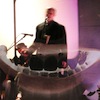 Waldron’s limited foray into being a vocalist is documented on Bracktul Thleecher. Two versions of "Black Teeth" (Waldron’s party piece at Nurse With Wound shows) highlight the humor at the heart of irr. app. (ext.). The first version was Waldron’s first performance of the piece in California in 2006 where he stomps through the song using a range of vocals and solo percussion. Not a huge amount has changed with the 2011 studio version also included here but hearing this very simple but perfectly captured take is a treat. The other song included here is "Lurcher" which was written for Nurse With Wound but not used in the end. Again there are two versions, one live and one studio, but the song does not have the same magnetism of "Black Teeth." "Lurcher" is not bad but when paired with such a strong song, it has to fight hard to get a look in.
Waldron’s limited foray into being a vocalist is documented on Bracktul Thleecher. Two versions of "Black Teeth" (Waldron’s party piece at Nurse With Wound shows) highlight the humor at the heart of irr. app. (ext.). The first version was Waldron’s first performance of the piece in California in 2006 where he stomps through the song using a range of vocals and solo percussion. Not a huge amount has changed with the 2011 studio version also included here but hearing this very simple but perfectly captured take is a treat. The other song included here is "Lurcher" which was written for Nurse With Wound but not used in the end. Again there are two versions, one live and one studio, but the song does not have the same magnetism of "Black Teeth." "Lurcher" is not bad but when paired with such a strong song, it has to fight hard to get a look in.
samples:
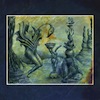 On the subject of Nurse With Wound, 4 Orphans features the finished parts of an abandoned collaboration between Waldron and Steve Stapleton from 2001. While both since have appeared on Nurse With Wound and irr. app. (ext.) albums respectively, none of the collaborations come close to the sounds or approach of 4 Orphans. "Form in Fasciation" is a percussion-heavy work where haunting drones and ambiences emerge like spirits during a primitive religious invocation. On "Pitches of Suchness," the pair develop a piece that brings to mind Luc Ferrari’s Presque Rien except instead of a sleepy fishing village waking up to a sunny morning, night has fallen and something queer is afoot. Out of all these releases, this is the one I keep coming back to. It is too bad this album was never finished because this certainly had the potential of being a masterpiece.
On the subject of Nurse With Wound, 4 Orphans features the finished parts of an abandoned collaboration between Waldron and Steve Stapleton from 2001. While both since have appeared on Nurse With Wound and irr. app. (ext.) albums respectively, none of the collaborations come close to the sounds or approach of 4 Orphans. "Form in Fasciation" is a percussion-heavy work where haunting drones and ambiences emerge like spirits during a primitive religious invocation. On "Pitches of Suchness," the pair develop a piece that brings to mind Luc Ferrari’s Presque Rien except instead of a sleepy fishing village waking up to a sunny morning, night has fallen and something queer is afoot. Out of all these releases, this is the one I keep coming back to. It is too bad this album was never finished because this certainly had the potential of being a masterpiece.
samples:
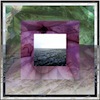 Another collaboration included in these recent releases is a reissue of The Famine Road, Waldron’s work with Diana Rogerson which was originally included as a bonus CD-R with her Fistfuck live LP in 2008. The original version from the bonus disc is included along with two newer versions of the piece. The 2011 edition is as engaging and askew as the 2008 version and the "Easy Listening" version removes all the sharp edges of the original to make a mournful, textured ambience which is more in line with the idea of a famine road; roads built during the Irish famine in the 1840s from nowhere to nowhere as part of the government's attempt to employ the countless starving people who had found themselves without a means of feeding themselves. This is bleak music for a bleak period of history.
Another collaboration included in these recent releases is a reissue of The Famine Road, Waldron’s work with Diana Rogerson which was originally included as a bonus CD-R with her Fistfuck live LP in 2008. The original version from the bonus disc is included along with two newer versions of the piece. The 2011 edition is as engaging and askew as the 2008 version and the "Easy Listening" version removes all the sharp edges of the original to make a mournful, textured ambience which is more in line with the idea of a famine road; roads built during the Irish famine in the 1840s from nowhere to nowhere as part of the government's attempt to employ the countless starving people who had found themselves without a means of feeding themselves. This is bleak music for a bleak period of history.
samples:
- The Famine Road (2008 Version)
- The Famine Road (2011 Version)
- The Famine Road (Easy Listening Version)
 
Read More
- Administrator
- Albums and Singles
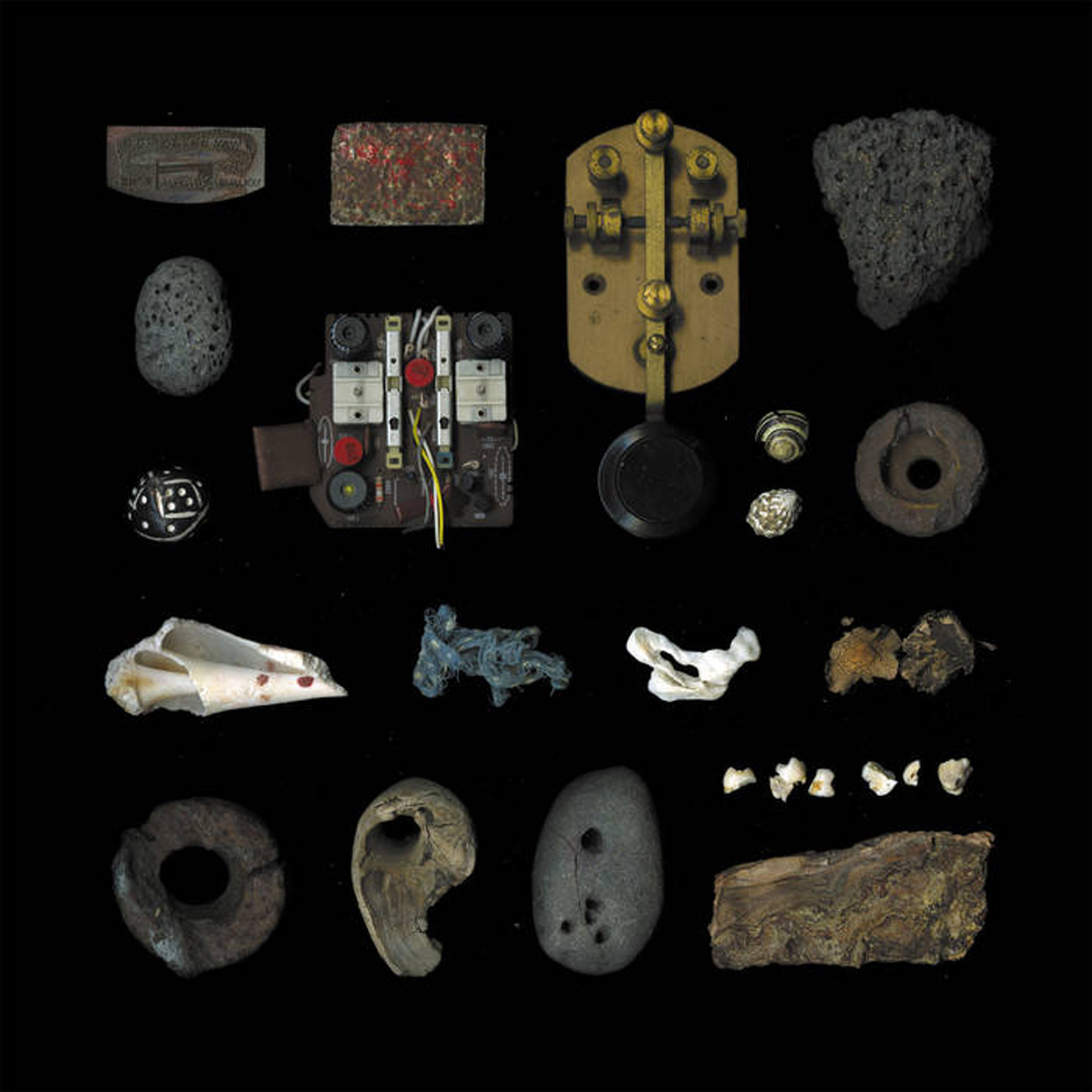 This latest slice of heaven from Ian William Craig has quite a curious provenance, as it was assembled from orphaned pieces dating all the way back to 2014's landmark A Turn of Breath. As such, it is not exactly the proper follow-up to Centres, yet it is every bit as great as I would expect such an album to be. Notably, Thresholder is far from a collection of disconnected outtakes and middling material, as the pieces are all roughly tied to a commission work relating to quantum physics and space. As befits such an inspiration, Thresholder very much focuses on Craig's more experimental and abstract side, unfolding as a hallucinatory and dreamlike collage of woozily swooning angelic vocals in a crackling sea of distressed tape loops and hiss. If Centres is the album where Craig's gift for songcraft came into full bloom, this is the companion piece that illustrates the full depth of his textural and production brilliance.
This latest slice of heaven from Ian William Craig has quite a curious provenance, as it was assembled from orphaned pieces dating all the way back to 2014's landmark A Turn of Breath. As such, it is not exactly the proper follow-up to Centres, yet it is every bit as great as I would expect such an album to be. Notably, Thresholder is far from a collection of disconnected outtakes and middling material, as the pieces are all roughly tied to a commission work relating to quantum physics and space. As befits such an inspiration, Thresholder very much focuses on Craig's more experimental and abstract side, unfolding as a hallucinatory and dreamlike collage of woozily swooning angelic vocals in a crackling sea of distressed tape loops and hiss. If Centres is the album where Craig's gift for songcraft came into full bloom, this is the companion piece that illustrates the full depth of his textural and production brilliance.
The opening "Elided" is a quietly simmering and lovely statement of intent, as Craig's beautiful voice wordlessly floats across a faintly hissing and shimmering void, leaving a spectral, fluttering, and shivering afterimage in its wake.Much like the other ten pieces on Thresholder, it does not quite fall into ambient or drone territory.Instead, it is something else entirely, as the ghost of a structured song remains at the piece's core despite the textural ravaging that it has undergone.That ingenious approach to abstract/experimental music is central to why Thresholder manages to be such a coherent and gorgeous album, despite being fragmented and partially dictated by the unpredictable whims of scratchy and wobbling tapes.I am sure Craig did not actually destroy any fully formed songs for this release, but there are enough corroded hooks and recurring themes burbling out of the hissing fantasia to evoke the illusion of a heavenly "pop" album straining to penetrate the pleasant fog of half-sleep.Unsurprisingly, the most memorable moments are those in which the melodies penetrate that fog the deepest.As such, the album's centerpiece is "Some Absolute Means," which builds to a glorious crescendo of rich organ chords, insistently repeating tape loops, and intertwining vocal harmonies that feels like a kindred spirit to A Turn of Breath's "A Slight Grip, A Gentle Hold" suite.Later, "And Therefore The Moonlight" feels like a languorous and understated coda to that piece, sneakily providing one of the album’s most striking passages, as a fragile and warbling loop of Craig's voice is left behind in the song's wake as everything else disappears.It then impressively segues into still another great piece, the lush, sacred-sounding chorale "The Last Westbrook Lament."
While those are the pieces that stand out as obvious highlights, the true beauty of Thresholder lies in how all of the individual pieces bleed into one another to form a sublime and mesmerizing whole.There is nothing weak or indulgent to be found on this album, as Craig was every bit as rigorous with his editing as he would have been with an album of actual songs.The only real difference between the obvious gems and the less obvious ones is where Craig puts his focus: with pieces like "The Last Westbrook Lament," there is an immediately gratifying melody, while a piece like the closing "More Words for Mistake" takes a bit more time to appreciate (a ghostly, melancholy melody slowly creeps out of a skipping, popping, and gasping squall of tape noise).A piece like "TC-377 Poem," on the other hand, strikes a perfect balance between conventional beauty and experimentation, as snatches of fragmented vocal melody pile up on one another and fall apart amidst a gnarled and stuttering roar of ravaged tapes.At other points, Craig explores some non-tape avenues of achieving his smudged and obscured dreamlike beauty.The most significant such divergences are the very different halves of the two-part "Idea for Contradiction."In the first part, Craig sang a simple and lovely melody in an underground cistern in Gothenburg and let the cavernous natural reverb works its magic.On "Idea for Contradiction 2," however, Craig goes the opposite route and gradually engulfs and corrodes his vocals with a roiling sea of distortion.
I cannot say that I did not expect Thresholder to be an excellent album, as all of Craig's recent major releases have been stellar, but I was a bit surprised by how it feels like an inspired throwback to his early work.Instead of a regression from his more vocal-centric fare, this album feels like Craig decided to revisit and perfect his earlier aesthetic with benefit of being considerably more evolved in every single aspect of his artistry.Given that I quite enjoy much of Craig's comparatively uneven early output, that move absolutely delights me, as Thresholder feels like the definitive statement of Craig's gorgeously warm and seething soundscape side.In fact, this album lies somewhere between a more intimate and human incarnation of Cloudmarks and a version of A Turn of Breath that passed through additional layers of tape decay until it was just the ghostly essence of its former self.Given Thresholder's more pronounced experimental tendencies, it likely will not find as wide an audience as Centres or Breath, but it should, as it is every bit on the same level as those classics.At this point in his career, references to similar artists like William Basinski no longer have a place in any discussion of Craig's work, as there no longer are any similar artists: the beauty that Craig creates with his voice and his tapes is very much a singular one.
Read More
- Administrator
- Albums and Singles
 Scott Morgan's latest album is quite a surprise, at least by Loscil’s eternally understated standards.  Partially inspired by hearing Philip Glass’s  Koyaanisqatsi score on a worn VHS tape, Monument Builders finds Loscil being a pulled in a number of different directions at once while still being held together by the unifying thread of Morgan's warmly hissing and elegantly blurred production aesthetic.  The result is quite an atypically epic and chameleonic Loscil album, but the material is strong enough to quell most of my misgivings about Morgan's stylistic tourism.
Scott Morgan's latest album is quite a surprise, at least by Loscil’s eternally understated standards.  Partially inspired by hearing Philip Glass’s  Koyaanisqatsi score on a worn VHS tape, Monument Builders finds Loscil being a pulled in a number of different directions at once while still being held together by the unifying thread of Morgan's warmly hissing and elegantly blurred production aesthetic.  The result is quite an atypically epic and chameleonic Loscil album, but the material is strong enough to quell most of my misgivings about Morgan's stylistic tourism.
Scott Morgan’s work has always tended towards the melancholy side, but Monument Builders is a bit more unambiguously dark than he has been in the past.  Aside from Glass, this album was also inspired by philosophy and art that explored the transience of humanity and the perverse and unintended beauty that we leave in our wake.  It is especially easy to see how the latter theme might resonate especially strongly with Morgan, as he has long been fascinated with distressed and decayed sounds: Edward Burtynsky's distressed and decayed landscapes depicted on such a grand scale are not entirely unlike Morgan’s own, albeit in a different medium and at a much different scale.  That said, however, Morgan does seem to be wrestling with the idea of crafting something epic here, albeit within the decidedly non-epic Loscil aesthetic of dub techno slowed to a near-ambient crawl.  A few pieces still seem largely content with business as usual though, such as the brooding and slow-burning opener "Drained Lakes," which marries a simple minor-key melody to a muted kick-drum pulse and some subtly harsh and grinding swells.  Gradually, the piece fleshes out into more lush territory, but not without a brief interlude of uncharacteristic starkness and muted catharsis.
Morgan’s "lo-fi Glass" fixation kicks in in earnest with the next piece though, as the obsessively repeating and propulsive arpeggios and somber brass textures of "Red Tide" sounds unapologetically like Glassworks played through a thin haze of static.  While Morgan basically appropriated Glass's style wholesale, he at least manages to make his pastiche good enough to stand with the real thing.  That quixotic Glass obsession resurfaces yet again with "Anthropocene," though Morgan is able to inject a bit more of his own aesthetic into it this time around by adding a skipping kick-drum beat.  Elsewhere, the Glass influence and Morgan's newfound propensity for grand gestures generally just manifest themselves as mournful horn motifs looming above Loscil’s usual crackling, slow-motion dub.  My favorite pieces tend to be those that avoid the Glass influence entirely though, even if they do maintain the album's elegiac tone.  "Deceiver," for example, is initially a very simple and melancholy synth progression, but it eventually blossoms into a hauntingly strangled and corroded-sounding melody.  Elsewhere, the closing "Weeds" completely wrong-footed me by unexpectedly channeling Love Streams-era Tim Hecker with a gorgeous crescendo of stuttering and chopped angelic voices.  It is unfortunate that such a comparison is totally unavoidable, but it is an absolutely wonderful piece regardless and an unexpectedly appropriate and rapturous way to conclude such an otherwise bleak album.
Obviously, the primary flaw with Monument Builders is that it is so nakedly derivative in places, but Morgan perversely manages to cumulatively build something rather original from his co-mingled architecture of Loscil and borrowed iconic aesthetics.  Whether it was a conscious decision or not, Morgan has essentially composed his own Koyaanisqatsi score, albeit for an imaginary dystopian version directed by Edward Burtynsky.  As such, Monument Builders is a much more fascinating release than a more distinctly "Loscil" album might have been.  Besides, compositional originality has never been a part of Loscil's appeal for me at all–I have always been drawn to Morgan's work primarily for its craftsmanship and masterful attention to textural detail, production-wise.  That is where Morgan has always shined and he shines yet again here.  Also, he definitely gets points for ambitiously straining at the seams of his own aesthetic and trying to do something new, even if the results feel a bit transitional (some fans will definitely find the previously reliable Morgan’s transformation a bit jarring).  Morgan may have made some stylistic missteps along the way with this record, but they were at least in service of a significant and satisfying artistic statement: Monument Builders is admirably more than "yet another Loscil album."
Samples can be found here.
Read More
- Administrator
- Albums and Singles
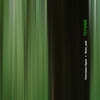 While the title is in reference to the source material (field recordings in Ancient Olympia, Greece), it also serves as an appropriate name for these two monumental artists coming together. Linked only by the use of the same raw materials, both Lopez and Thanasis Kaproulias create very different, yet powerful worlds of sound.
While the title is in reference to the source material (field recordings in Ancient Olympia, Greece), it also serves as an appropriate name for these two monumental artists coming together. Linked only by the use of the same raw materials, both Lopez and Thanasis Kaproulias create very different, yet powerful worlds of sound.
Lopez's contribution, "Untitled #249," begins extremely quiet, remaining mostly silent until the most distant spectral drones slowly come into focus.In the earlier moments, there’s more of a ghostly warmth than the clinical digital sound I associate with Lopez's work.It eventually transitions into sharp, digital realms and harsher textures, though above an almost rhythmic clattering.
The dissonance peaks around the middle of the 30 minute work, with metallic scraping noises amidst a disorienting haze.Once it goes as loud as it can get, it slowly fades away, retreating and ending in a sparse, open field of sound, with the tiniest fragments of what was just heard remaining.
Novi_sad's half of the album, "Ellipsis," relies less on subtlety and more on variation.While it begins with slow motion, hollow noises and distant, almost thunder-like crashes that reverberate into infinity, it soon expands outward and allows the underlying field recordings to be heard.Transitioning from rushing water into a swarm of insects (though heavily processed), it builds layer by layer in intensity.
However, as the noisier elements are piling up, an almost melodic undercurrent surfaces: possibly a bit of folk music that found its way onto the tape, which is mangled into a beautiful drone, continuing to echo within caves of rushing water.The piece ends in the exact opposite way of Lopez's:it sounds like all of the previous layers of noise are stacked atop each other to create an intense cacophony that only ceases when the disc does.
Even though the only thing linking these two pieces are the source material, with each artist processing the field recordings in drastically different ways, the two pieces feel like they belong with each other.While their approaches to utilizing the source material may differ, the undeniable strength of both the young composer and the prolific veteran is prominent.
samples:
- Francisco Lopez - Untitled #249 (Excerpt 1)
- Francisco Lopez - Untitled #249 (Excerpt 2)
- Novi_sad - Ellipsis
 
Read More
- Administrator
- Albums and Singles
 Paring a recently released new work with a digital-only remastered reissue from the label, there is a decade of time elapsed between these two compositions, in which Roden’s evolution as an artist can be heard, particularly in his use of digital processing and composing.
Paring a recently released new work with a digital-only remastered reissue from the label, there is a decade of time elapsed between these two compositions, in which Roden’s evolution as an artist can be heard, particularly in his use of digital processing and composing.
Proximities is the result of a live synth performance recorded within a former army barracks, captured on a digital recorder, an iPhone, and an old microcassette recorder.The sparse sounds were then layered and placed alongside each other, with a simple tone progression expanded into a complex whole.
The piece opens with Spartan layers of sound: slowly rising and falling washes of synth tones mirroring the haze of the early morning, when the raw material for this work was recorded.There is a slow build, eventually paring the fragile synthetic tones with a grimier, dirty underbelly, likely sourced from lo-fi audio detritus.
The tones are slow and structured, and while they are somewhat repetitive, there is a constant flow: a river of sound that never stands still.As the piece comes to its conclusion, there is an even greater sense of chaos and fluidityWhile the basic tonal structure stays constant, everything around it disintegrates and eventually only the hollow environment in which recording took place can be heard.
Forms of Paper was released by Line in 2001, remastered by Bernard Guenter and reissued as a high quality download.While it was one of the heralding works of the "lowercase" genre (a genre of which the boundaries and parameters I never fully understood), there is far too much complexity for it to be pigeonholed into a label that would imply that nothing happens in the recording.
In fact, quite the opposite is true:although the piece takes a while to make itself known, Roden's processing of the sound of book pages becomes a world of subtle beeps and tones, with a greater focus on textures.While there is a more significant shifting between busy and sparse, it is a more repetitive work in comparison to Proximities.Not surprising since, in the accompanying essay, Roden points out that this was his first work utilizing Pro-tools rather than just analog tape, and that at the time he was quite fond of using copy and paste in composition.
While Roden may have begrudgingly entered the world of computer composition on Forms of Paper, his proficiency in its use is obvious within Proximities.The careful balance of tones and ambience are compelling and demand close attention, with a satisfying payoff.
samples:
 
Read More
- Administrator
- Albums and Singles
 Zola Jesus (effectively Nika Roza Danilova) made a huge artistic leap in 2010, transitioning from the lo-fi, gothic post-punk of The Spoils to the sweeping, synth-driven drama of her twin EP releases, Stridulum and Valusia. The two EPs were a grand step forward for Danilova, upping the drama quotient with two fistfuls of dark, cinematic songs. Conatus continues her winning streak, functioning as a distillation and subtle refinement of the ideas put forward on last year's EPs.
Zola Jesus (effectively Nika Roza Danilova) made a huge artistic leap in 2010, transitioning from the lo-fi, gothic post-punk of The Spoils to the sweeping, synth-driven drama of her twin EP releases, Stridulum and Valusia. The two EPs were a grand step forward for Danilova, upping the drama quotient with two fistfuls of dark, cinematic songs. Conatus continues her winning streak, functioning as a distillation and subtle refinement of the ideas put forward on last year's EPs.
The album kicks off with "Swords," a prelude of clattering electronic percussion, bass punches, and a first taste of that voice—the most majestic, operatic thing this side of Diamanda Galás, it casts a dominant shadow over her music in a similar manner. On Conatus, Danilova has finally mastered the balance between her vocal strengths with her compositional abilities, in conjunction with co-producer Brian "Nudge" Foote. The two flesh out the album with a wonderfully diverse palette of sounds: tightly wound electronics, church organ-like synths, cello and violin, deep wobbly bass, and occasional industrial clatter.
Throughout Conatus, Danilova's voice is bathed in hazy reverb; at times it sounds like she's crooning to the heavens within a cathedral, at others she sounds like a spectre. She tries new tricks, notably chopping her voice to bits (see the intro to "Vessel," the album's catchy first single) and swimming within the album's interweaved electronics and stark beats. Elsewhere, she spotlights herself among piano, strings, and pulsing synths, like on "Hikikomori," the album's high point. Later, "Skin" is Danilova's most vulnerable moment yet on record, without anything to hide behind—just a few resonant piano chords, and her own ethereal background vocals.
Like much first-wave post-punk, to which Zola Jesus is clearly indebted, Conatus is at its most enjoyable when Danilova's hooks are at their most hummable. As the album progresses, a couple of its tracks come off as faceless and forgettable—typically in direct proportion to the hook quotient, or lack thereof. For example, "In Your Nature" is a pleasant Xerox of Danilova's ballad style, but lacks a memorable chorus to keep it from sinking. And while there's nothing quite as massive as Valusia's "Sea Talk" on Conatus, "Lick the Palm of the Burning Handshake" comes damn close, with a militaristic drumbeat backing Danilova's insistent vocals, peaking with a punchy chorus: "The need to know, it takes you over / the need to grow, it takes you under / again and again, it takes you over."
Samples:
Read More
- Administrator
- Albums and Singles
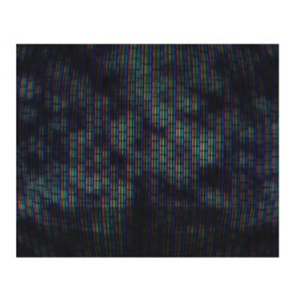 Sebastian Banaszczyk has been strongly refining his craft in "sound recycling," or essentially utilizing limited, conceptually relevant recordings as the only basis for compositions. These two separate albums, for two distinctly different dramatic performances, have some consistencies between them, but each stand on their own as distinct works, as well as representing the next stage in Bionulor's discography.
Sebastian Banaszczyk has been strongly refining his craft in "sound recycling," or essentially utilizing limited, conceptually relevant recordings as the only basis for compositions. These two separate albums, for two distinctly different dramatic performances, have some consistencies between them, but each stand on their own as distinct works, as well as representing the next stage in Bionulor's discography.
Coriolanus is a modernized take on Shakespeare's drama, while SKAZAna is a biographical piece of a girl sexually abused by her stepfather, so both are drastically different in content, with neither being light works.Banaszczyk himself is an actor, and thus he approached both scores from a different perspective than just a composer would, which strengthens that bond between score and performance expertly.
Coriolanus is the longer of the two works at nearly 78 minutes and 26 untitled pieces, with the original source material extracted from classical instruments subjected to heavy processing and treatments.The use of traditional sounds and instruments subjected to modern composition fits well with the modernized approach to the theatrical work it was composed for as well.
While the actual instruments sampled and used remains ambiguous, hints of melody and music drift throughout the album, often times just out of focus or interrupted by outbursts of digital interference or noise.On the sixth and 12th pieces especially what almost sounds like a piano appears frequently. On the latter, Banaszczyk tosses in some raw, jarring noise bursts to keep things from becoming too comfortable or complacent.
The 14th piece, clocking in at a bit over ten minutes is definitely the lengthiest, and with that duration Banaszcyzk allows the heavily treated tones and textures to drift outward extensively, with the resulting composition sounding more in line with some of the earliest electro-acoustic and electronic composers in its slow build and nuance.
samples:

For SKAZAna, the source material is the voice of writer and actress Sylwia Oksiuta, and the sound recycling pulls it into a world that has pretty much no semblance of humanity about it.Much of the melody or hints of musicality from Coriolanus are gone, replaced instead with disembodied noises or mangled low bit rate samples.The second and third parts especially are all a series of stuttering, delayed clatters and haunting, frigid swells of sound bathed in what sounds like spring reverb.
This album is much more about texture and noise rather than tone, with echoing bits and windy passages of noise creating a cold, isolated atmosphere that fits the subject matter perfectly.Some pieces seem to capture Oksiuta's breath, processed and stretched into hissy static and harsh, noisy outbursts.It is only on two pieces (the 17th and 20th) that other sources are used, the former consisting of fragile, bell like noises and ringing sounds, while the latter is surprisingly traditional, with a slew of strings and orchestral instrumentation bringing the score to a rather conventional coda.
While I was not able to experience any of the visual components to these performances, Banaszczyk's audio accompaniment works well enough as stand alone compositions.The recurring themes and sounds that appear throughout is perhaps the best clue that these are not necessarily albums independent of their original application, but that is only rather noticeable on Coriolanus, and even then it is not repetitive to the point of being a problem.Having followed Bionulor's work roughly since the project's inception, it has been a strong trajectory of evolution, with each work showing more and more expertise in both his use of sounds and his overall compositions, and these two works are no different.
samples:
 
Read More


